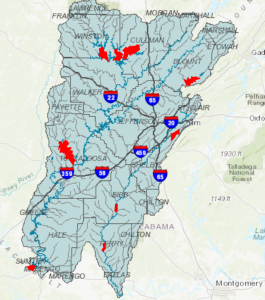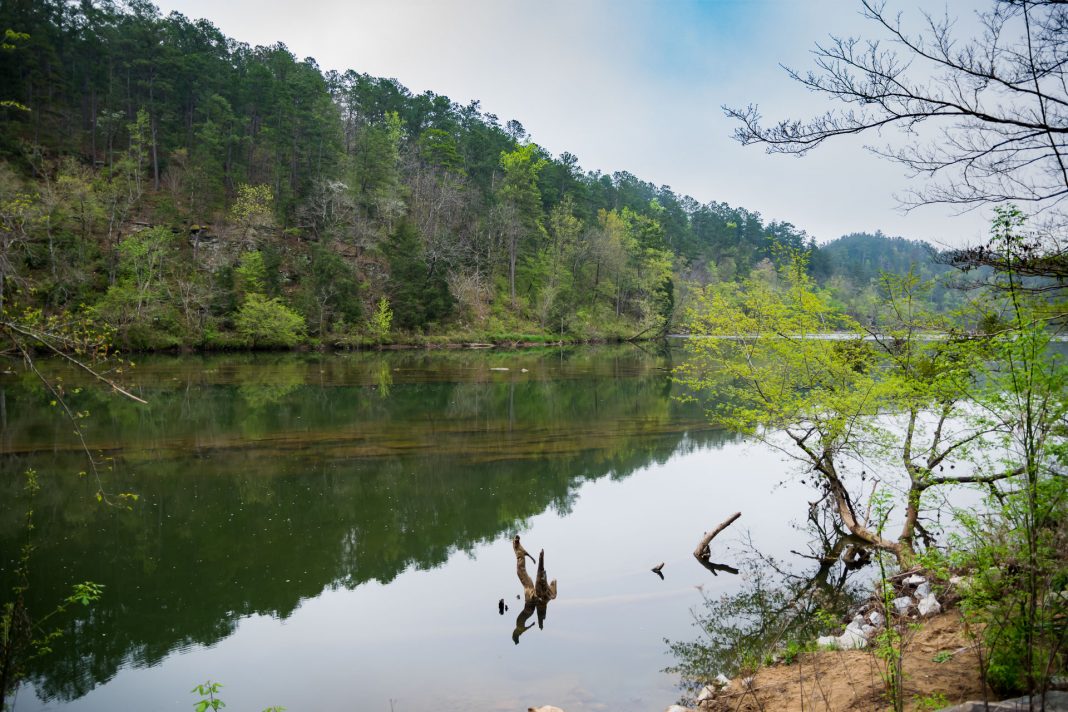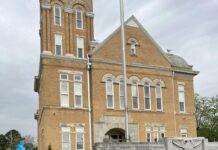
While the major news focuses on the contamination from the Tyson spill in the Black Warrior River, and mercury contamination of Large Mouth Bass in many of Alabama’s major waterways, just as relevant to Bibb County (and Perry) is the “do not eat” advisory on Spotted Bass caught in the Cahaba River.
The report states that at sampled spots of the river at Highway 219 in Bibb and at Highway 183 in Perry, mercury was found. Alabama Department of Public Health (ADPH) advises no more than 2 meals per month of Spotted Bass caught in Bibb, and to not eat any Spotted Bass caught in Perry County. By the time the river enters Dallas County, however, there is no restriction on consuming any species caught. It should be noted that the restrictions in Bibb and Perry only apply to Spotted Bass and other species are not named.
The Bibb Voice asked David Butler – the Cahaba Riverkeeper – his thoughts on the mercury contamination in the Cahaba, as well as why the advisory was restricted to spotted bass and if the source of the mercury is known.
David Butler:
“Most of the mercury in the water is the product of burning fossil fuels. We put it into the air, then it settles in a wide area. The elemental mercury is converted to methylmercury by bacteria, and then consumed by smaller fish, snails, bugs…the reason they say spotted bass is because they are one of the primary large predators. We take the advisories with a grain of salt. Just because there isn’t an advisory in a particular area, doesn’t mean it is safe to eat, and there could be issues with other fish, especially catfish.
“We are not surprised to see the advisories in the lower Cahaba because everything upstream eventually ends there, so some of the pollution from the Birmingham air eventually settles in Birmingham and washes downstream. Mercury is naturally found in the environment, but usually not in quantities that are harmful, and must be converted to methylmercury before it is absorbed in tissue.
“The Waterkeepers in Alabama have sponsored a hotline that allows people to call in and hear the advisories for a particular watershed. We do not know exactly where all the sampling sites in the Cahaba watershed are, so remain cautious when relaying where it might be safe to consume more fish. We just know for certain that one should be cautious when eating fish where there are advisories.”
The Cahaba Riverkeepers also keep a current swim guide available online where they monitor e. coli levels at various points along the Cahaba and report whether it is safe or dangerous to swim in those areas. http://www.cahabariverkeeper.org/swimguide/
The full ADPH advisory report can be read here. The Black Warrior area which includes Bibb starts on page 23, but the entire state is included in the file:
http://www.alabamapublichealth.gov/tox/assets/al-fish-advisory-2019.pdf














